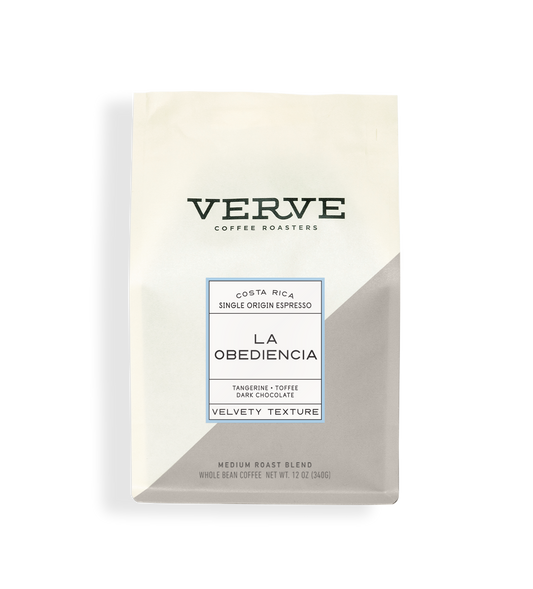Coffee Beans 101: Everything You Required to Find Out About Coffee and Blended Coffee Beans
When it comes to coffee, recognizing the subtleties of coffee and combined beans can transform your everyday mug. You'll uncover the distinctive attributes of Arabica and Robusta beans, and how each influences taste and high levels of caffeine material. From the growing process to toasting techniques, every step plays a role in your coffee experience. So, what makes the perfect mixture? Let's discover the important aspects that add to an exceptional cup of coffee.
Understanding Coffee Beans: Varieties and kinds
When diving right into the world of coffee, comprehending the types and varieties of coffee beans is vital for each enthusiast. You'll mostly come across two major species: Arabica and Robusta. Arabica beans are known for their smooth, complex flavors and lower caffeine content, making them a favored amongst coffee aficionados. On the other hand, Robusta beans load a strike with a stronger, more bitter taste and greater high levels of caffeine levels, commonly made use of in coffee blends.
Within these varieties, you'll discover numerous regional varieties, each bringing one-of-a-kind features. Ethiopian Yirgacheffe provides bright floral notes, while Colombian beans offer a healthy taste account. As you explore, keep in mind to take notice of processing techniques like cleaned or all-natural, as they can significantly influence the last taste. By familiarizing yourself with these beans and their flavors, you'll boost your coffee experience and make more enlightened selections in your brewing journey.
The Growing Process: From Seed to Bean
When you explore the journey of coffee, all of it beginnings with seed option techniques that establish the foundation for quality. From there, farming and gathering play vital duties in making certain the beans prosper. Finally, processing approaches transform those gathered cherries right into the coffee beans you enjoy.
Seed Option Strategies
Selecting the best seeds is necessary for creating premium coffee beans, as it lays the foundation for the entire expanding procedure. You need to begin by selecting seeds from reputable sources that prioritize high quality and genetic diversity. Seek ranges recognized to prosper in your particular climate and dirt conditions. Take notice of the seed's age and storage space problems, as fresh seeds often tend to sprout far better. When feasible, go with organic seeds to decrease direct exposure to damaging chemicals. Take into consideration the illness resistance of various ranges, as this can significantly impact your yield. Don't hesitate to consult with neighborhood farmers or professionals to get understandings right into the best seed alternatives for your region. This understanding will boost your coffee-growing experience.
Growing and Harvesting
As you support your coffee seeds into growing plants, recognizing the farming and harvesting procedure is essential for attaining the ideal taste and high quality. Beginning by growing your seeds in well-draining soil, ideally in a shaded area to shield them from straight sunlight.
Hand-picking is often the finest method to ensure only the ripest cherries are selected. Timing is important; collecting also very early or too late can influence the flavor account of your beans.

Handling Methods Clarified
As soon as you have actually harvested your coffee cherries, the next necessary action is refining them to transform those dynamic fruits into the beans you'll brew. In the completely dry procedure, you spread out the cherries out in the sun to dry, allowing the fruit to ferment and pass on unique flavors to the beans. Recognizing these methods is key to appreciating your coffee experience.
Toasting Techniques: Exactly How Taste Is Developed
When it comes to toasting coffee beans, recognizing roast levels is essential to exposing their distinct flavors. Each roasting method impacts the scent and improves the flavor growth procedure, offering you a richer coffee experience. Let's check out exactly how these variables integrated to boost your day-to-day mixture.
Roast Levels Described
Roast degrees play a necessary duty in forming the flavor profile of your coffee. You'll delight in intense level of acidity and fruity notes when you choose a light roast. As you relocate to a medium roast, you'll notice an equilibrium of sweetness and complexity, frequently highlighting delicious chocolate or caramel tastes. Dark roasts, on the other hand, deliver vibrant, smoky qualities with much less acidity, making them durable and abundant. Each degree arises from different roasting times and temperature levels, influencing the beans' chemical composition. By understanding these degrees, you can much better pick a coffee that matches your preference choices. Try out different roasts to discover which one resonates with you, enhancing your overall coffee experience and satisfaction.
Influence On Fragrance
The roast level not just influences the taste of your coffee yet also significantly affects its fragrance. When you select a light roast, you'll usually discover brilliant, floral notes that can make your coffee smell fresh and vivid. As the beans dim, the scent shifts; a medium roast draws out much more well balanced, caramelized scents, while a dark roast tends to include vibrant, great smoky undertones. Each toasting method launches different unpredictable compounds, forming how your coffee smells. Furthermore, the quality of the beans plays a crucial duty; newly baked coffee releases a lot more aromatic oils, enhancing that tempting aroma. Pay focus to the roast level-- it's key to disclosing the full aromatic experience of your brew.
Taste Growth Process
As you discover the flavor advancement process, you'll discover that toasting methods play a vital function in shaping the taste profile of your coffee. The roasting temperature and time directly influence the acidity, sweet taste, and anger of the beans. Light roasts maintain more of the bean's initial tastes, highlighting flower and fruity notes.
Coffee vs. Blended Coffee: Key Differences
Coffee and blended coffee each offer special experiences that satisfy different tastes and choices. Espresso is a concentrated coffee brewed forcibly warm water through finely-ground coffee beans, leading to a rich, strong taste and a creamy layer of crema on top. It's often enjoyed as a shot or used as a base for beverages like cappucinos and cappuccinos.
On the other hand, blended coffee incorporates different beans from different regions, developing a much more balanced flavor account. You'll typically discover blends that highlight level of acidity, sweetness, or body, making them versatile for different brewing approaches. While espresso focuses on strength, mixed coffee may supply a more comprehensive series of flavors that can transform with each sip.
Eventually, your selection in between espresso and blended coffee come down to your personal choice. Whether you long for a leisurely mug or a quick shock, both alternatives have something delicious to supply.

Developing Techniques: Unlocking the Perfect Mug
When it involves developing coffee, finding the right technique can change your experience and elevate your mug. Each brewing strategy has its distinct beauty and can substantially affect your coffee's taste and aroma. For example, utilizing a French press permits you to delight in a rich and robust brew, while a pour-over approach supplies a tidy, brilliant cup with unique tastes.
If you choose coffee, buying a high quality equipment can aid you master the art of drawing shots. Additionally, for ease, a single-serve sheath system supplies speed without giving up preference.
Don't forget about cold brew, which delivers a smooth, much less acidic coffee perfect for hot days. Experiment with different techniques to uncover what resonates with your taste.
Sampling Notes: Identifying Flavor Profiles
Just how can you truly appreciate your coffee if you do not recognize what flavors to look for? Tasting notes are your guide to understanding the intricate world of coffee. Some coffees could leave a chocolatey or sugar aftertaste, while others might have an intense, clean coating.
Think about the body of the coffee, as well; is it ventilated and light or thick and syrupy? Don't fail to remember acidity; an intense level of acidity can include activity, while a reduced level of acidity may give a smoother experience. By identifying these flavor accounts, you'll grow your connection with each cup, making coffee tasting a wonderful journey of exploration.

Tips for Picking and Storing Coffee Beans
Storing and picking coffee beans correctly can greatly enhance your developing experience. Beginning by choosing high-grade beans that suit your preference - SOE.
As soon as you have your beans, store them in an impermeable container to stop direct exposure to air, light, and wetness. A dark, amazing area functions best, so prevent keeping them in the refrigerator or freezer, as this can introduce moisture. Only grind the amount you need to maintain freshness; entire beans maintain flavor longer than pre-ground coffee.
Lastly, try to use your beans within two to 4 weeks after opening for peak preference. Complying with these tips will certainly guarantee your coffee remains delicious and delightful, raising your day-to-day mixture to brand-new heights.
Frequently Asked Questions
How Much Time Do Coffee Beans Keep Fresh After Toasting?
Coffee beans remain fresh for about two weeks after toasting - SOE. You need to save them in an airtight container, far from light and wetness. Afterwards, their flavor and scent start to lessen considerably

Can I Mix Different Coffee Bean Varieties?
Absolutely, you can mix different coffee bean varieties! Trying out blends can enhance tastes and create an unique preference account. Just see to it SOE to balance the strengths and qualities of each variety for the best outcomes.
What Is the Perfect Grind Size for Espresso?
For espresso, you'll want a great work size, about the texture of salt. This allows ideal removal, resulting in a rich, flavorful shot. Experiment a little bit to locate what suits your taste best!
Just How Does Elevation Affect Coffee Bean Taste?
Altitude impacts coffee bean flavor by affecting the growth rate and chemical make-up. Greater altitudes cause slower growth, which improves level of acidity and intricacy, giving your coffee a vibrant and one-of-a-kind taste you will not fail to remember.
Exist Decaffeinated Versions of Espresso Beans?
Yes, there are decaffeinated versions of coffee beans. You can delight in an abundant coffee flavor without the caffeine kick. Simply try to find "decaf" blends at your local coffeehouse or specialized store.
Coffee Beans 101: Every Little Thing You Required to Know About Espresso and Blended Coffee Beans.
When diving right into the world of coffee, recognizing the types and selections of coffee beans is necessary for every fanatic.When it comes to roasting coffee beans, comprehending roast degrees is key to revealing their special flavors. Espresso is a focused coffee brewed by requiring hot water through finely-ground coffee beans, resulting in an abundant, strong flavor and a luscious layer of crema on top.On the other hand, blended coffee integrates different beans from various regions, producing an extra well balanced taste profile.